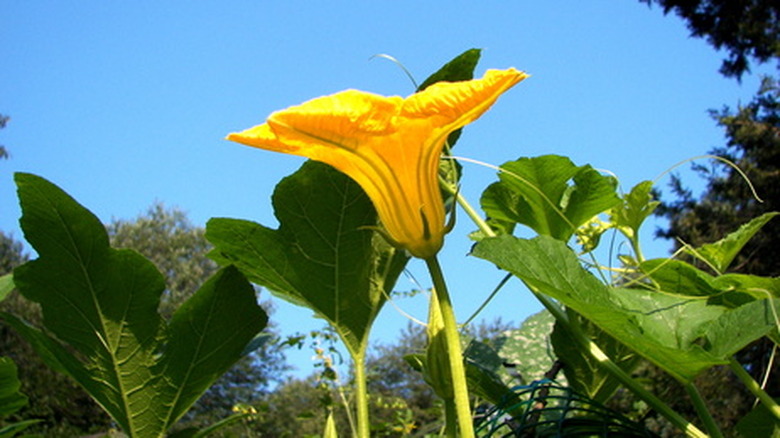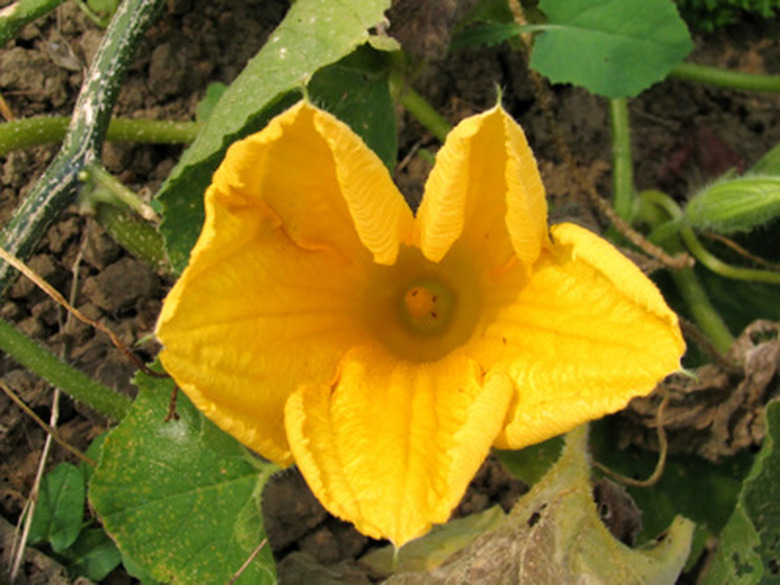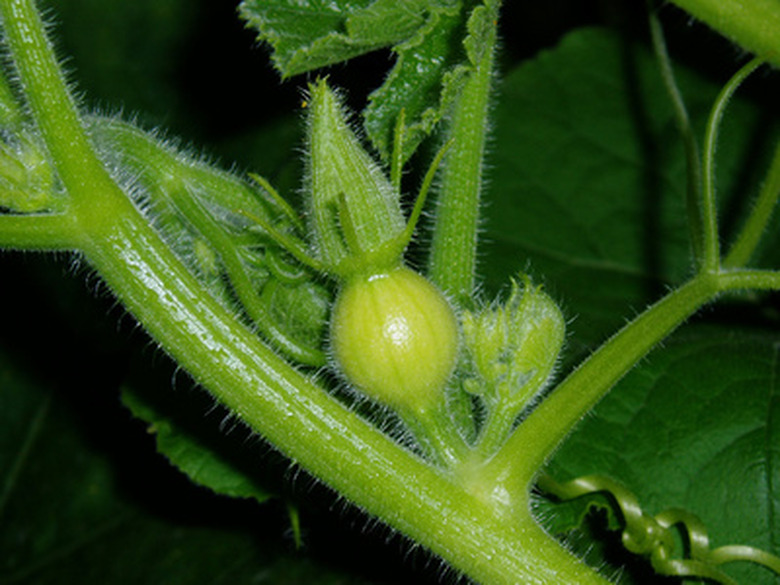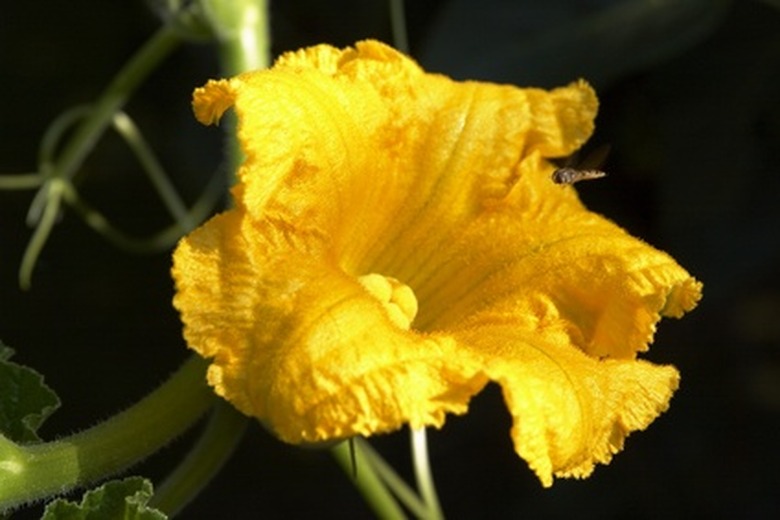How To Tell Female Flowers From Male Flowers On Pumpkin Plants
At first glance, it may appear that all of the flowers on your pumpkin plant are the same. A closer inspection reveals distinct differences between the female flowers and the male flowers. Pumpkin plants — and other "cucurbits," such as melons, cucumbers and squash — have both female and male flowers.
At first glance, it may appear that all of the flowers on your pumpkin plant are the same. A closer inspection reveals distinct differences between the female flowers and the male flowers. Pumpkin plants — and other "cucurbits," such as melons, cucumbers and squash — have both female and male flowers. Being able to detect the differences will be especially important if you plan to pollinate the flowers by hand.
Step 1
Look for the flowers with the long and thin stalks. These are the males. They'll typically appear before the female flowers, and they'll also be more abundant.
- At first glance, it may appear that all of the flowers on your pumpkin plant are the same.
- Being able to detect the differences will be especially important if you plan to pollinate the flowers by hand.
Step 2
Look for the stamens. Another distinguishing feature of the male flower is the presence of what appears to be a single stamen — the rod-shaped, pollen-producing part of the flower that protrudes from the center. On a male pumpkin flower, however, what appears to be only one stamen is actually more than one stamen fused together.
Step 3
Look for the flowers with the short and thick stalks. These are the females. Underneath the female flower, you'll also notice a green, berry-sized ovary — the part that swells into a pumpkin after fertilization takes place. Fertilization is also followed by the shriveling up of the female flower.
- Another distinguishing feature of the male flower is the presence of what appears to be a single stamen — the rod-shaped, pollen-producing part of the flower that protrudes from the center.
- Underneath the female flower, you'll also notice a green, berry-sized ovary — the part that swells into a pumpkin after fertilization takes place.
Step 4
Look for the stigma. Female flowers can be identified by the multi-segmented stigma in the center. The stigma is the pollen-receiving part of the flower.
Differentiate Female Pumpkin Flowers From Males
Keep watch on your growing pumpkin vines for the first flower buds, which usually form in July. Inspect the plant for female flowers in the early morning as flowers are only open for a few hours. Search along the vine stem and the side branches of the main stem about two weeks after the first male flower appeared. This is a miniature, immature pumpkin waiting to grow. Check the center of the open flower to locate the female stigma, which looks like an irregularly lobed ball in the center of the flower, for confirmation that you have a female flower.
- Female flowers can be identified by the multi-segmented stigma in the center.
- Check the center of the open flower to locate the female stigma, which looks like an irregularly lobed ball in the center of the flower, for confirmation that you have a female flower.
References
- "The Perfect Pumpkin"; Gail Damerow; 1997
- "The Complete Burke's Backyard: The Ultimate Book of Fact Sheets"; Don Burke; 2005
- "Fabulous Food From Every Small Garden"; Mary Horsfall; 2009
- "Introductory Botany: Plants, People, and the Environment, Second Edition"; Linda Berg; 2007
- Pennsylvania State University Cooperative Extension: Pumpkin Pollinators
- PumpkinNook: Pollination
- The Complete Burke's Backyard; Don Burke




